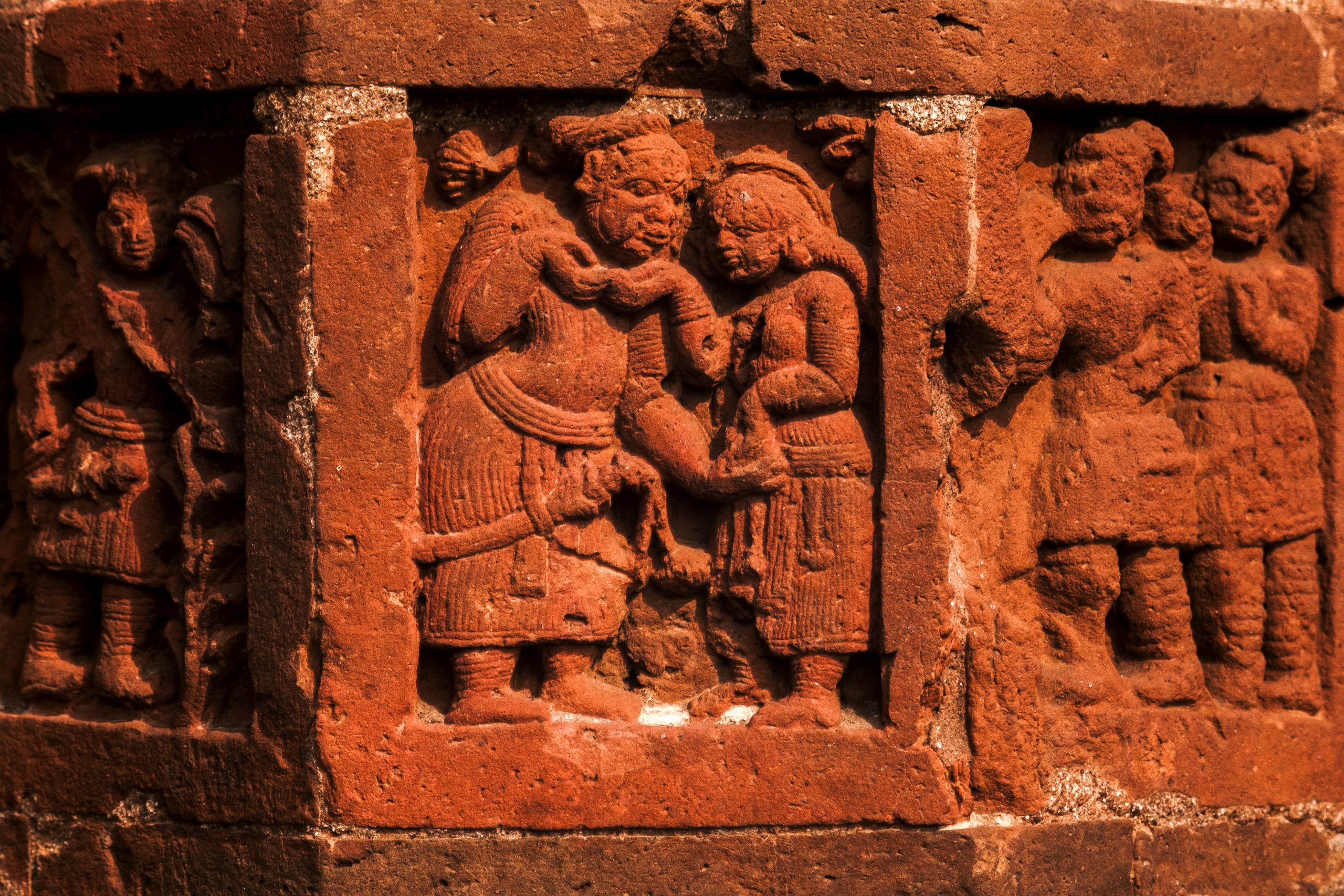Some of my most cherished childhood memories are from when I would visit my mother’s ancestral home in Bankura district, West Bengal, and of the day trips we’d take to Bishnupur — a provincial town in the district — around 140 kilometres from Kolkata. Bishnupur is the kind of place Bengalis call mafassal, an Arabic loanword which originally meant ‘separate,’ but in Bengali refers to suburban areas or localities that are not quite cities but also not typically villages. Today, Bishnupur is best known for its cottage industries of Baluchari sarees, conch-shell bangles, and terracotta wares.
But Bishnupur was not always the mafassal it is today. It was once the capital of the Malla kings who ruled over the ancient state of Mallabhum — which spanned over most of the Rarh region and parts of the Chota Nagpur Plateau among other areas.
Bir Hambir, the 49th Malla king of Bishnupur who ruled between the 16th and 17th centuries CE, was the first Malla ruler to convert to Gaudiya Vaishnavism and become the movement’s patron in the region. He also transformed Bishnupur into a centre of Vaishnava arts and culture, and affirmed his newfound faith by commissioning the construction of the Rashmancha, the first of the terracotta temples, in 1600 CE.
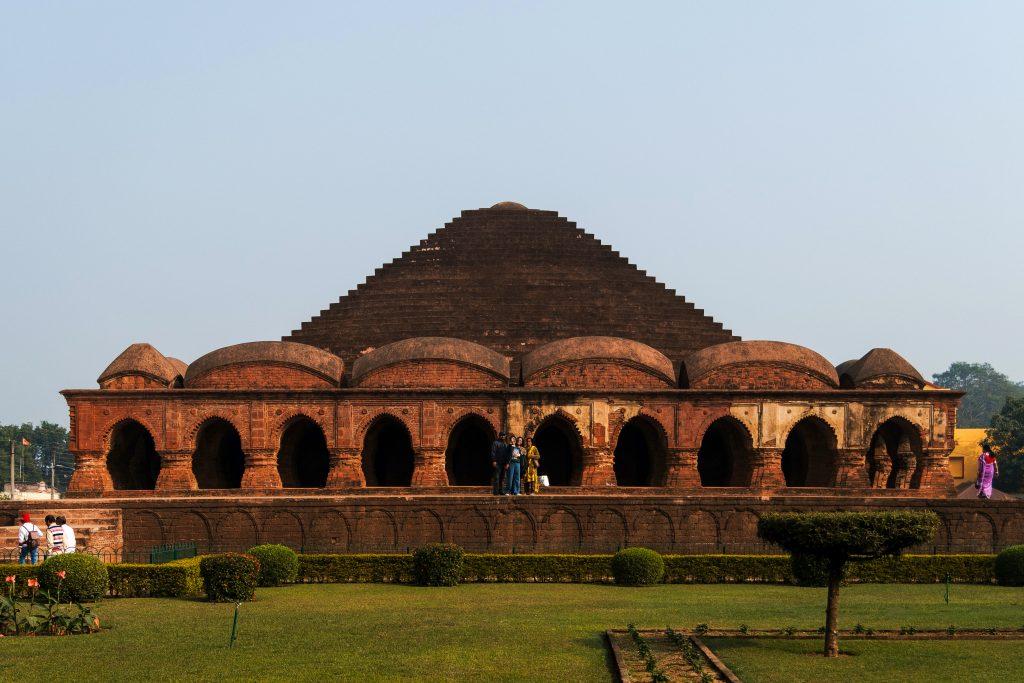
The scarcity of stone, and the abundance of laterite clay in the region led to its wide usage in the form of terracotta bricks and tiles. Researcher and author Pika Ghosh, in her book Temple to Love: Architecture and Devotion in Seventeenth-Century Bengal (2005), points out that most of the temples here moved away from the North Indian nagara style and took on the navaratna or new ratna style: “In abandoning the nagara convention, the architects, masons, and terracotta artisans had multiple options available for putting the parts of a temple together. They chose to draw from vernacular huts, and from the mosques and mausoleums of the late Sultanate period that gave such a model monumental form.” She points to the dedicatory inscriptions of the temples where “the designation ratna is applied fairly consistently” and that they differentiate this style as a new temple type. Some temples are of the bangla and chala types, which have sloping roofs.
According to 18th-century British reports, there were once as many as 450 terracotta and laterite stone temples in Bishnupur. But now, only around 20 of them remain, and I believe they stand testament to the timeless skills of Bishnupur’s vernacular architects, stone masons, and terracotta artisans.
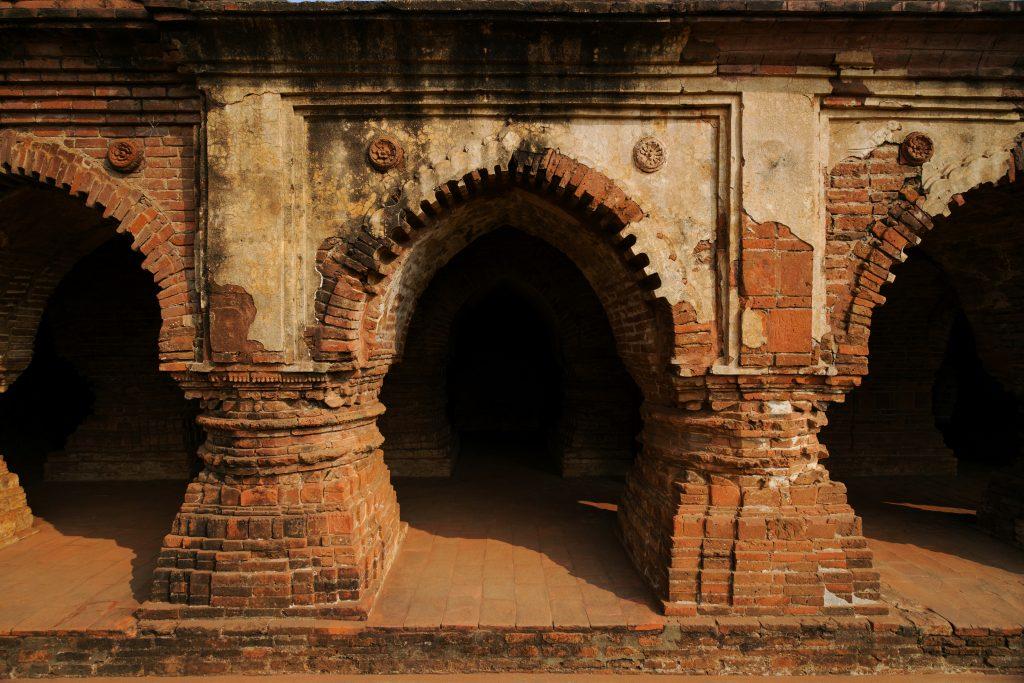
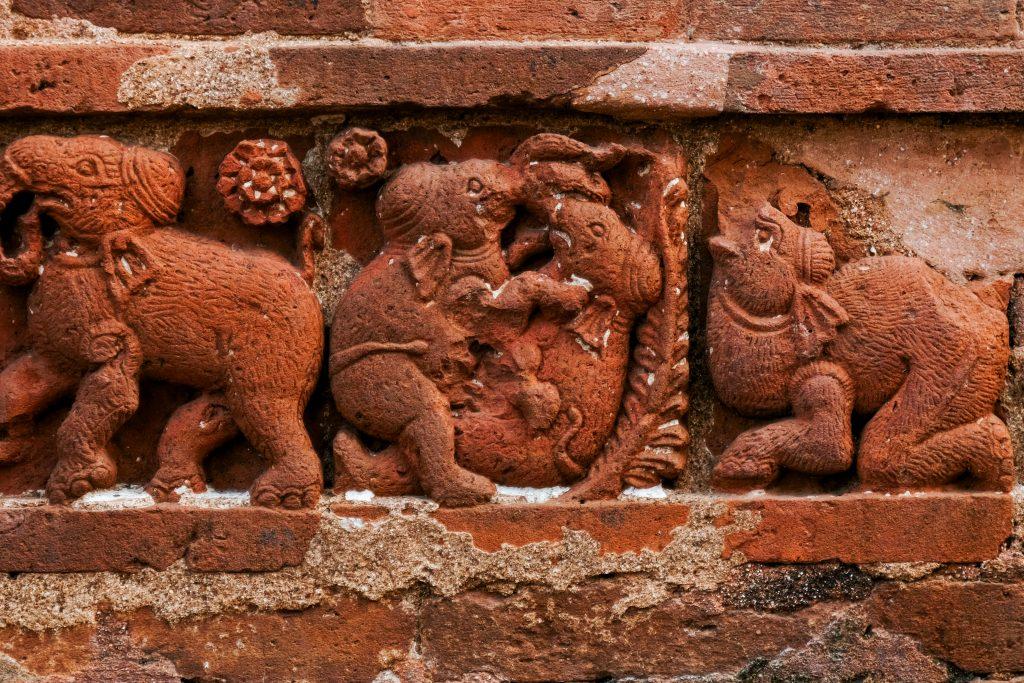
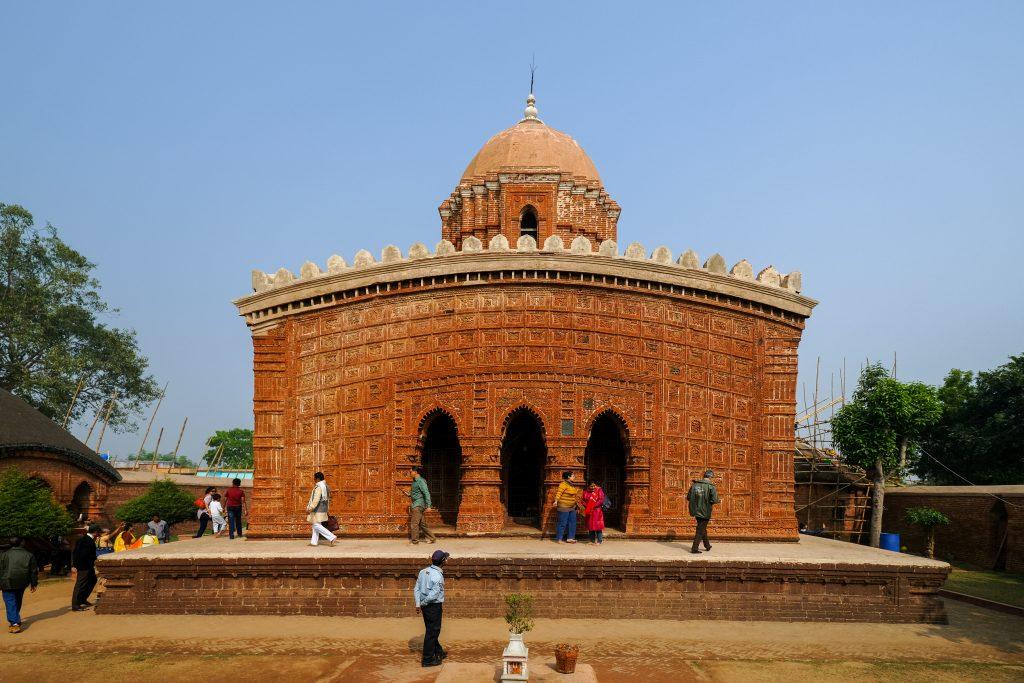
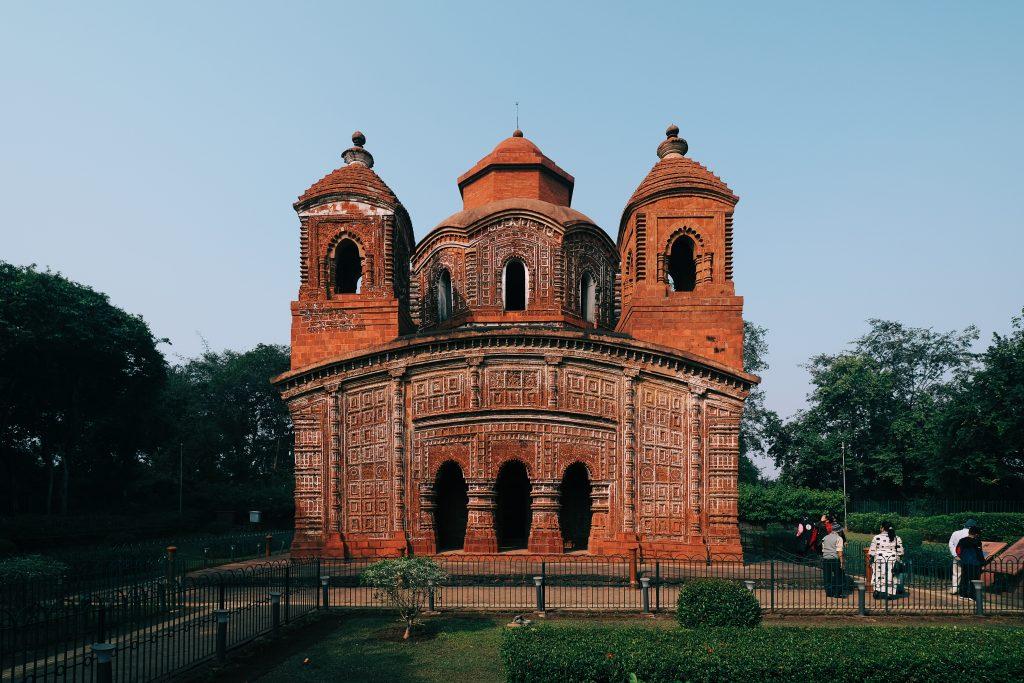
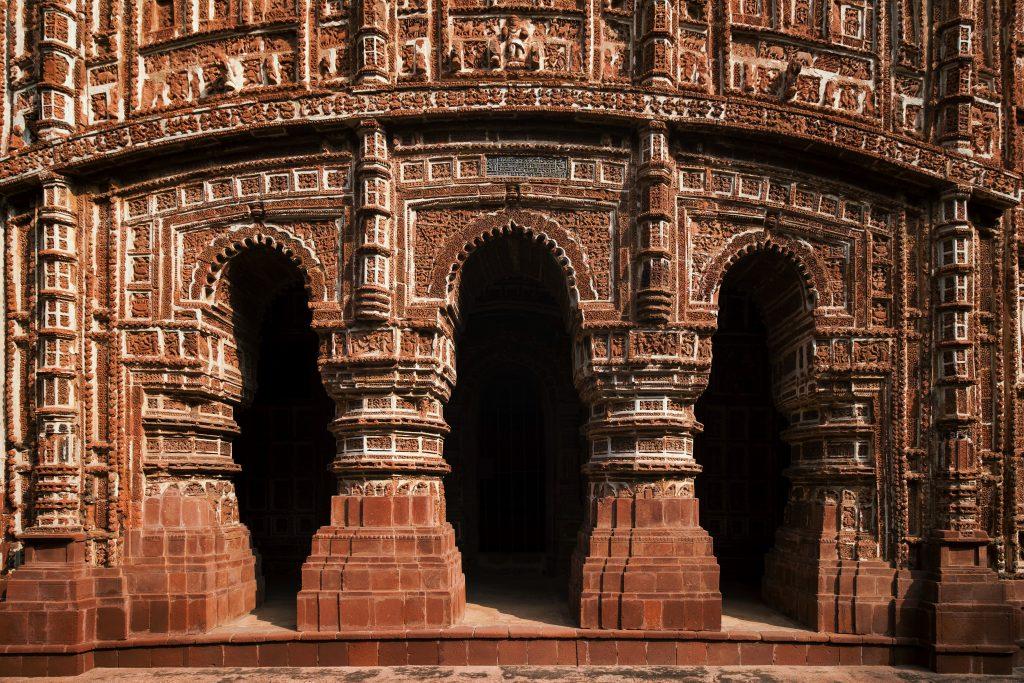
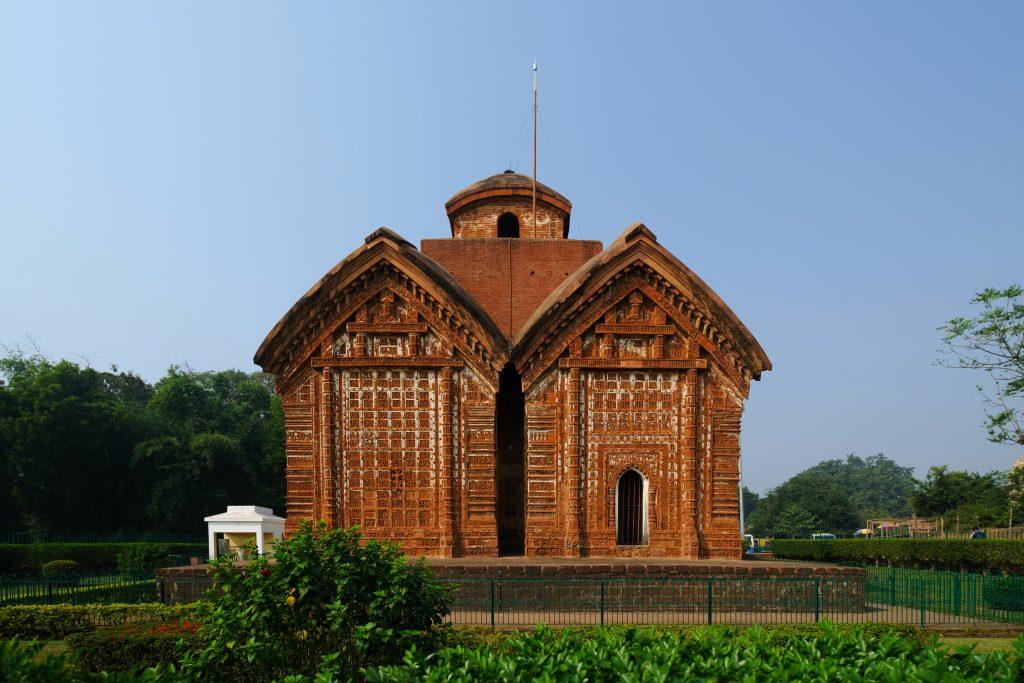
Our selection of stays across India, best visited for their design and style. Check in
